70 percent of fuel rods in reactor core at Fukushima nuke plant damaged Found this on Godlike Productions. Excerpts:
About 70 percent of the 400 fuel rods (Approximately 280 fuel rods. Why not say that?) in the No. 1 reactor at the crippled Fukushima No. 1 Nuclear Power Plant are damaged, Tokyo Electric Power Co. (TEPCO) has revealed.
In addition, some 30 percent of the 548 fuel rods (Approximately 165..) in the No. 2 reactor core and 25 percent of those in the No. 3 reactor core (Unknown variable, eh?) are also thought to be damaged, the power company stated on April 6. The figures are based on analysis of radiation data collected from the side of the reactor pressure vessel between the March 11 earthquake and tsunami and March 15.
Big aftershock rattles Japan disaster zone Excerpts:
A powerful aftershock rocked Japan's tsunami disaster zone, killing at least three and triggering new concerns over nuclear power plants in a region still grappling with an atomic emergency.
Electricity was cut across a huge area of northern Japan, forcing cooling systems at three nuclear plants to switch to emergency power and plunging more than 3.3 million households into darkness late Thursday night.
At least one back-up supply remained online at all three plants, but the aftershock highlighted the potential risks of nuclear generation in an earthquake zone amid a battle to stabilise reactors at tsunami-hit Fukushima.
Massive pumps departing U.S. for Japan nuclear plant Excerpts:
Two of the world's largest concrete pumps will depart the United States later this week as part of the effort to resolve the crisis at Japan's Fukushima Daiichi nuclear power plant, officials said.
Each pump weighs 190,000 pounds and has a boom reach of over 227 feet, and can pump water and concrete at massive rates. They will be loaded aboard enormous Russian cargo jets Friday.
The pumps' manufacturer, Putzmeister, said in a release the devices are normally used to pour concrete for bridges and high-rise construction projects, but can offer pinpoint accuracy "to directly target hotspots within the reactors" and help with cooling.
There are only three such pumps in the world, said Putzmeister spokeswoman Mary Roberts.
Water leaks found at Onagawa nuke plant after Thursday quake
Water leaks were found Friday at Onagawa nuke plant in Miyagi prefecture after the quake measuring 7.4 on Richter scale shook Japan's northeast Thursday night, Kyodo News quoted the plant's operator as saying.
The report didn't say where the water came from or whether it contains radioactivity.
Onagawa was the nearest nuclear power plant from the focus of the March 11 earthquake and the aftershock on Thursday.
State of Japan's stricken nuclear reactors From Terra Daily. Excerpts:
To stop a catastrophe, crews have pumped thousands of tonnes of water into the reactors and pools, urgent work now creating a massive amount of radioactive water and sparking a fresh fear of contamination in the Pacific Ocean.
Emergency workers have found turbine buildings and trench tunnels outside submerged in highly radioactive water, also discovering water leaking from a cracked pit into the ocean.
In order to find safe storage space for the most radioactive water -- so dangerous that it is halting crucial repair work -- operator TEPCO has been forced to empty containers with lower-level radioactive water into the ocean.
The Tokyo Electric Power Company has released 11,500 tonnes, or more than four Olympic pools-worth, into the sea, despite protests from local fishermen.
Fishermen: Utility's actions in Japan nuclear crisis 'unforgivable'
Japanese fishermen have taken the offensive in their fight against the owner of the stricken Fukushima Daiichi power plant, angrily calling the utility's actions insulting, incompetent and "unforgivable" over the course of the weeks-long nuclear crisis.
The National Fishery Corporative Joint Association, a trade group for Japan's fishing industry, issued a scathing statement Wednesday just hours after its members met with officials from the Tokyo Electric Power Company, which runs the crippled plant.
In it, the group demanded that the utility and the Japanese government "compensate all parties (that have) indirectly or directly suffered" as a result of the situation.
"Tokyo Electric has not been capable of understanding the damage at the plant and (contaminated) water. That led to this serious situation," the group said in the statement.
"Tokyo Electric and the government (share) responsibility for this situation. It is unforgivable," the message continues. "All those who are living and sustaining their lives on the sea are feeling strong rage against (the utility and the government's) irresponsible behavior."
Grab Your Chopsticks and Geiger Counters Wall Street Journal. Excerpts:
At Gyotaku, a Japanese restaurant in Hong Kong, business is bad and money is tight. But that didn’t stop owner John Liang from splurging on a new tool last week: a Geiger counter, for 10,000 Hong Kong dollars (about US$1,300).
Since the March 11 earthquake and tsunami set off Japan’s nuclear crisis, many diners in Hong Kong have steered clear of sushi restaurants for fear of radiation poisoning from food, particularly fish, that’s come from Japan. As business spirals down, some Hong Kong eateries have chosen to stay the course and use fish from Japan. But others have switched to suppliers from other countries — or turned creative.
Hence Mr. Liang’s hand-held radiation-reading device. It will be available next week for customers who want extra assurance. “They can point the gun at their meal and get a reading before taking a bite,” says Mr. Liang.
But actually Mr. Liang has also eliminated Japanese food from his kitchen, switching to fish from Spain, Brazil, Australia, Canada and Taiwan. Even the pork at Gyotaku, once sourced from Japan, now comes from Spain and Australia.
About 70 percent of the 400 fuel rods (Approximately 280 fuel rods. Why not say that?) in the No. 1 reactor at the crippled Fukushima No. 1 Nuclear Power Plant are damaged, Tokyo Electric Power Co. (TEPCO) has revealed.
In addition, some 30 percent of the 548 fuel rods (Approximately 165..) in the No. 2 reactor core and 25 percent of those in the No. 3 reactor core (Unknown variable, eh?) are also thought to be damaged, the power company stated on April 6. The figures are based on analysis of radiation data collected from the side of the reactor pressure vessel between the March 11 earthquake and tsunami and March 15.
Big aftershock rattles Japan disaster zone Excerpts:
A powerful aftershock rocked Japan's tsunami disaster zone, killing at least three and triggering new concerns over nuclear power plants in a region still grappling with an atomic emergency.
Electricity was cut across a huge area of northern Japan, forcing cooling systems at three nuclear plants to switch to emergency power and plunging more than 3.3 million households into darkness late Thursday night.
At least one back-up supply remained online at all three plants, but the aftershock highlighted the potential risks of nuclear generation in an earthquake zone amid a battle to stabilise reactors at tsunami-hit Fukushima.
Massive pumps departing U.S. for Japan nuclear plant Excerpts:
Two of the world's largest concrete pumps will depart the United States later this week as part of the effort to resolve the crisis at Japan's Fukushima Daiichi nuclear power plant, officials said.
Each pump weighs 190,000 pounds and has a boom reach of over 227 feet, and can pump water and concrete at massive rates. They will be loaded aboard enormous Russian cargo jets Friday.
The pumps' manufacturer, Putzmeister, said in a release the devices are normally used to pour concrete for bridges and high-rise construction projects, but can offer pinpoint accuracy "to directly target hotspots within the reactors" and help with cooling.
There are only three such pumps in the world, said Putzmeister spokeswoman Mary Roberts.
Water leaks found at Onagawa nuke plant after Thursday quake
Water leaks were found Friday at Onagawa nuke plant in Miyagi prefecture after the quake measuring 7.4 on Richter scale shook Japan's northeast Thursday night, Kyodo News quoted the plant's operator as saying.
The report didn't say where the water came from or whether it contains radioactivity.
Onagawa was the nearest nuclear power plant from the focus of the March 11 earthquake and the aftershock on Thursday.
State of Japan's stricken nuclear reactors From Terra Daily. Excerpts:
To stop a catastrophe, crews have pumped thousands of tonnes of water into the reactors and pools, urgent work now creating a massive amount of radioactive water and sparking a fresh fear of contamination in the Pacific Ocean.
Emergency workers have found turbine buildings and trench tunnels outside submerged in highly radioactive water, also discovering water leaking from a cracked pit into the ocean.
In order to find safe storage space for the most radioactive water -- so dangerous that it is halting crucial repair work -- operator TEPCO has been forced to empty containers with lower-level radioactive water into the ocean.
The Tokyo Electric Power Company has released 11,500 tonnes, or more than four Olympic pools-worth, into the sea, despite protests from local fishermen.
Fishermen: Utility's actions in Japan nuclear crisis 'unforgivable'
Japanese fishermen have taken the offensive in their fight against the owner of the stricken Fukushima Daiichi power plant, angrily calling the utility's actions insulting, incompetent and "unforgivable" over the course of the weeks-long nuclear crisis.
The National Fishery Corporative Joint Association, a trade group for Japan's fishing industry, issued a scathing statement Wednesday just hours after its members met with officials from the Tokyo Electric Power Company, which runs the crippled plant.
In it, the group demanded that the utility and the Japanese government "compensate all parties (that have) indirectly or directly suffered" as a result of the situation.
"Tokyo Electric has not been capable of understanding the damage at the plant and (contaminated) water. That led to this serious situation," the group said in the statement.
"Tokyo Electric and the government (share) responsibility for this situation. It is unforgivable," the message continues. "All those who are living and sustaining their lives on the sea are feeling strong rage against (the utility and the government's) irresponsible behavior."
Grab Your Chopsticks and Geiger Counters Wall Street Journal. Excerpts:
At Gyotaku, a Japanese restaurant in Hong Kong, business is bad and money is tight. But that didn’t stop owner John Liang from splurging on a new tool last week: a Geiger counter, for 10,000 Hong Kong dollars (about US$1,300).
Since the March 11 earthquake and tsunami set off Japan’s nuclear crisis, many diners in Hong Kong have steered clear of sushi restaurants for fear of radiation poisoning from food, particularly fish, that’s come from Japan. As business spirals down, some Hong Kong eateries have chosen to stay the course and use fish from Japan. But others have switched to suppliers from other countries — or turned creative.
Hence Mr. Liang’s hand-held radiation-reading device. It will be available next week for customers who want extra assurance. “They can point the gun at their meal and get a reading before taking a bite,” says Mr. Liang.
But actually Mr. Liang has also eliminated Japanese food from his kitchen, switching to fish from Spain, Brazil, Australia, Canada and Taiwan. Even the pork at Gyotaku, once sourced from Japan, now comes from Spain and Australia.










































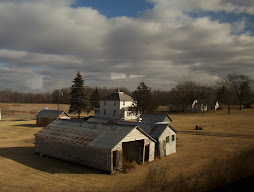


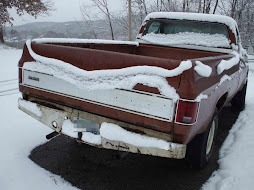

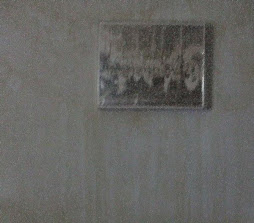






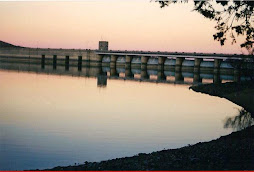
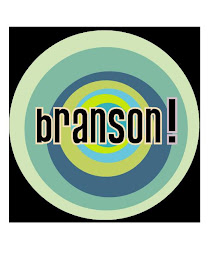






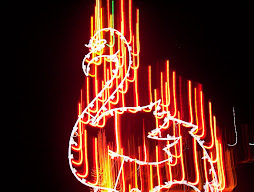




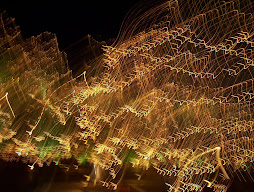

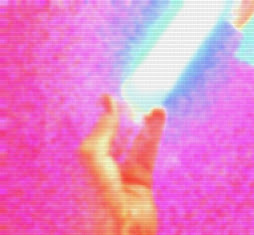

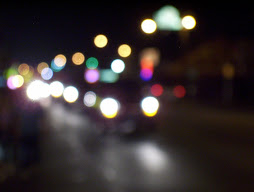









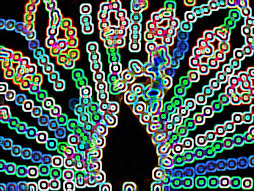









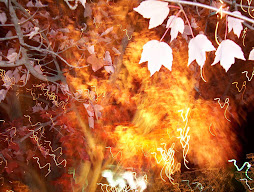









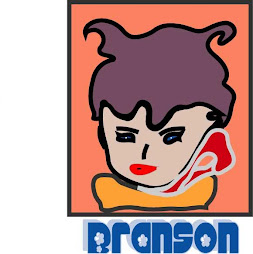



No comments:
Post a Comment